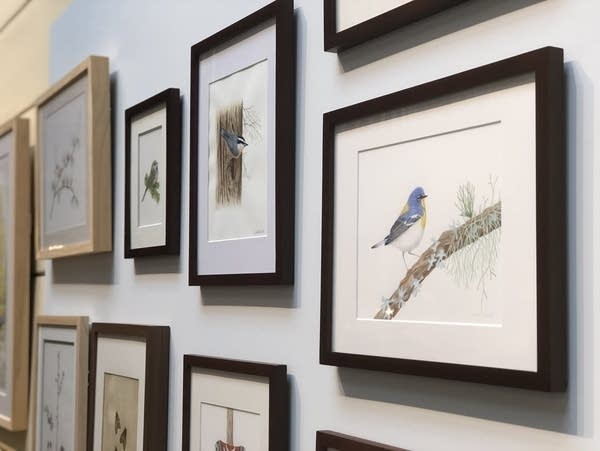In a changing climate, the work of botanical artists takes on new meaning

Botanical art displayed at the James J. Hill House in St. Paul depict trees and wildlife that are vulnerable to climate change, including a bird called a northern parula, drawn by Marj Davis.
Megan Burks | MPR News
Go Deeper.
Create an account or log in to save stories.
Like this?
Thanks for liking this story! We have added it to a list of your favorite stories.


